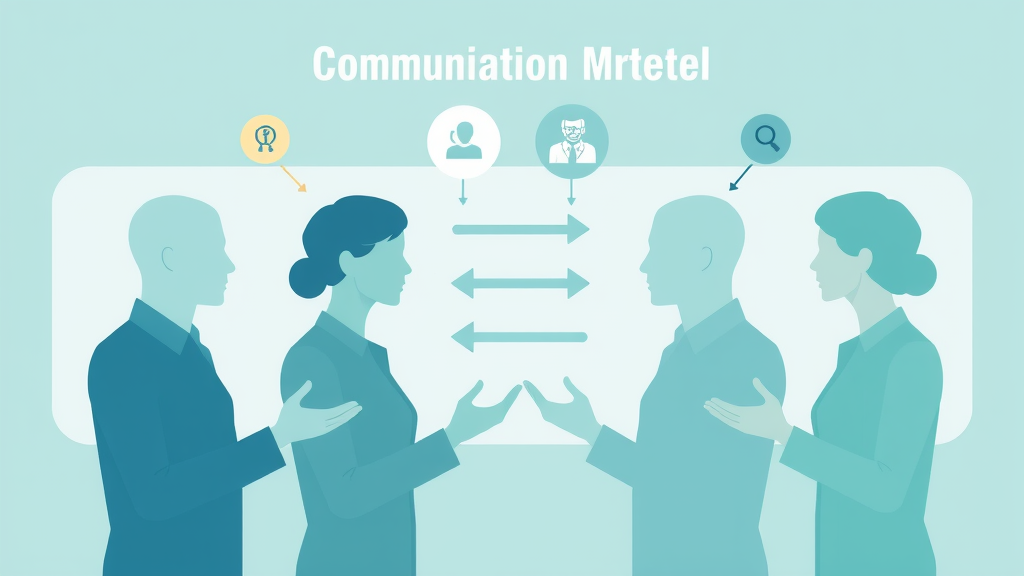Did you know that over a million people have attended neuro-linguistic programming workshops worldwide, yet the science behind NLP remains hotly debated? Despite its popularity and influence in fields ranging from therapy to corporate leadership, the question remains: What is neuro-linguistic programming (NLP), and why does it continue to spark intense conversations among practitioners and psychologists? In this beginner’s guide, we’ll unravel the origins, principles, and practical uses of linguistic programming, providing balanced insight into both its transformative prospects and ongoing controversies.
A Surprising Introduction: The Scope and Impact of Neuro-Linguistic Programming (NLP)
Neuro-linguistic programming, often called NLP, isn’t just another self-help trend—it has fundamentally shifted approaches to mental health, therapy, and personal development since its emergence in the 1970s. Whether you’re considering NLP training, curious about nlp techniques, or skeptical about its scientific grounding, it’s impossible to ignore the movement’s reach. NLP practitioners and coaches have introduced these concepts into business, therapy, education, sports, and even health issue management, alleging benefits from improved communication skills to breaking persistent behavioral patterns.
But why exactly does linguistic programming command so much attention, and what causes the scientific community’s divided response? As we’ll uncover, the scope of neuro-linguistic programming extends well beyond workshops. Proponents cite practical applications for everything from weight management to business leadership, while critics note a lack of empirical support in mainstream psychology. In this guide, you’ll gain a balanced foundation—both the facts and major viewpoints—equipping you to make informed decisions about engaging with NLP.

Did you know that over a million people have attended neuro-linguistic programming workshops worldwide, yet the science behind NLP remains hotly debated? Let's dive deep into this controversial phenomenon.
This global reach highlights the ongoing curiosity and controversy surrounding NLP. As you continue through this article, keep this fascinating paradox in mind: NLP’s wide adoption and simultaneous skepticism make it one of the most intriguing movements in personal and professional growth.
What You’ll Learn About Neuro-Linguistic Programming (NLP)
Defining what is neuro-linguistic programming (NLP)
Core concepts and history of linguistic programming
The most common NLP techniques and their applications
Expert perspectives and ongoing debates around NLP
How NLP may affect personal development and communication
Answers to frequently asked questions about neuro-linguistic programming
Defining What Is Neuro-Linguistic Programming (NLP)
At its most basic, neuro-linguistic programming (NLP) is a set of models and techniques designed to help people understand and change patterns in thinking, behavior, and communication. Developed in the 1970s by Richard Bandler and John Grinder, NLP proposes that there’s a strong connection between neurological processes (“neuro”), language (“linguistic”), and behavioral patterns learned through experience (“programming”). NLP aims to rewire unhelpful behaviors and boost positive outcomes by adjusting how we interpret and express ourselves—both internally through our thoughts and externally in our language.
What sets linguistic programming apart from other psychological approaches is its emphasis on modeling success. Rather than focusing solely on diagnosing health issues or emotional states, NLP practitioners believe you can “model” the behavior of high performers and apply it to achieve specific, desired results. In practice, this might mean using nlp techniques such as anchoring, mirroring, or the swish pattern to facilitate personal or professional change. Yet, despite these bold promises, NLP has faced criticism for its lack of empirical evidence and mixed claims regarding its effectiveness in addressing mental health problems or deep-seated behavioral patterns.
What Sets Neuro-Linguistic Programming Apart from Other Psychological Approaches?
Unlike traditional therapies or coaching methods, NLP is rooted in the belief that anyone can learn to “re-program” their mind. In comparison, many psychological frameworks focus on underlying causes of behavioral patterns, often looking back to childhood or subconscious processes. Linguistic programming sees change as accessible through conscious awareness and deliberate practice of new patterns.
Another distinguishing factor is NLP’s non-diagnostic stance. While a typical health professional or mental health professional might focus on identifying specific mental health issues before suggesting interventions, an nlp practitioner will frequently work on a client’s preferred representational system (visual, auditory, or kinesthetic) and use nlp techniques to “re-map” unhelpful thought patterns. This pragmatic, client-centered focus is attractive for those seeking tangible tools. However, it also means NLP sometimes lacks the scientific rigor expected by mainstream psychology, leading to ongoing debates within the field.
Key Terminology: Breaking Down Linguistic Programming
Linguistic programming can sound technical, but it’s surprisingly accessible once you grasp some essential concepts. Here are key ideas:
Neuro: Refers to the brain and how we organize our experiences through thoughts, feelings, and sensory input.
Linguistic: Focuses on how language—spoken or unspoken—shapes our perceptions and reactions.
Programming: Involves the habits, routines, and automatic responses built from repeated patterns and experiences.
One of NLP’s core concepts is the representational system. Each person processes the world through unique combinations of visual images, auditory words or sounds, and kinesthetic (physical) sensations—known as the preferred representational system. NLP practitioners tailor their interventions based on these preferences, aiming to make communication and change more effective for the individual.
(Watch a concise explainer video that visually outlines the basics of NLP, illustrating how the mind, language, and behavior interact in real-life situations.)
The History and Origins of Neuro-Linguistic Programming
The story of neuro-linguistic programming began at the University of California, Santa Cruz, in the early 1970s. Richard Bandler, a mathematics and computer science student, teamed up with linguist John Grinder. Inspired by the work of renowned therapists like Virginia Satir, Fritz Perls, and Milton Erickson, bandler and grinder set out to codify the verbal and non-verbal patterns of successful therapists. Their results were first published in the foundational two-volume work, The Structure of Magic, which explored how language could shape experience and facilitate lasting change.
Bandler and Grinder’s collaboration produced a unique methodology that merged language models and behavioral psychology, eventually developing into what we now call linguistic programming. Their experimental approach quickly gained traction, especially among those interested in personal development and practical change over traditional therapy models. Despite initial skepticism among some psychologists, the appeal of quick, actionable strategies—without the need for in-depth mental health diagnoses—helped NLP take hold in diverse settings from therapy offices to corporate boardrooms.

The Founders and Early Years of Linguistic Programming
Throughout the 1970s and 1980s, the partnership between Richard Bandler and John Grinder led to widespread interest in their techniques. They both asserted that anyone could learn the skills and “mental language” of successful people by observing their behavioral patterns, body language, and linguistic clues—including eye movements and shifts in emotional state. This modeling approach, later described by NLP practitioners as the heart of NLP, aimed to make excellence teachable.
The founders’ workshops drew academics, educators, therapists, and even law enforcement, seeking new ways to enhance communication and change. Titles like Frogs into Princes and Patterns of the Hypnotic Techniques of Milton H. Erickson further spread the movement’s ideas, making their “programming” of thoughts part of mainstream self-improvement culture, even as debates about the effectiveness of NLP and its scientific foundation simmered in the background.
Popularization of NLP: How It Became a Global Trend
By the late 1980s, linguistic programming had leapfrogged from American universities to a worldwide audience. The promise of fast, practical personal transformation fueled best-selling books, nlp training institutes, and a global network of nlp practitioners. NLP became integrated into fields as disparate as business entrepreneurship, professional sports, teaching, and mental health services—often taught as short seminars or immersive workshops. Its model for coaching, public speaking, and even conflict resolution made it especially attractive for those who valued actionable results over theoretical debate.
Still, as the movement spread, it remained at the center of a growing controversy about its lack of empirical validation. While millions participated in NLP seminars and referenced its principles, systematic reviews from psychology journals frequently challenged its claims. Nonetheless, the attitude and methodology of NLP continued to inspire practitioners seeking tools for rapid, practical change.
"NLP is an attitude and a methodology, not just a technique." — Richard Bandler, Co-founder of Neuro-Linguistic Programming
Fundamental Concepts of Neuro-Linguistic Programming (NLP)
Understanding what is neuro-linguistic programming (NLP) means exploring its foundation in communication, subjectivity, and learning. One of the primary frameworks in NLP is the communication model, which describes how individuals receive, filter, and interpret information. This model, rooted in cognitive psychology, proposes that much of what we experience as “reality” depends on subjective interpretations—hence, two people may respond very differently to the same stimulus based on their internal “maps.”
NLP sees every behavior as a response to patterns built up from experience, and these patterns can theoretically be “reprogrammed” using targeted nlp techniques. The result? Greater flexibility in thinking, healthier relationships, improved productivity, and new ways to influence your own and others’ responses in daily life. Let’s dig deeper into these core concepts next.

The NLP Communication Model
The NLP communication model suggests that every person filters raw sensory input—what they see, hear, and feel—through their own unique filters, including beliefs, values, and language. This internal process shapes a person’s map of reality and, ultimately, influences their behavior and responses. For example, someone’s preferred representational system might make them more likely to notice visual cues rather than sounds or touch in a conversation, affecting how effectively they communicate or absorb feedback.
These filters are shaped by past experiences, upbringing, education, and even social culture, making NLP interventions highly personalized. Many nlp practitioners use elements such as eye movements, voice intonation, and body posture to “read” client tendencies and guide their use of nlp techniques. The ultimate goal: empower people to change automatic, often unconscious reactions, replacing less helpful habits with more adaptive ones in the pursuit of improved mental health and personal growth.
Subjectivity and Representation Systems in Linguistic Programming
One of the most distinctive elements of neuro-linguistic programming is its emphasis on subjectivity. Rather than assuming there’s a single “correct” way to interpret events, NLP asserts that each of us creates an internal reality based on our sensory preferences—visual, auditory, or kinesthetic (touch/feeling). This “representational system” guides not only how we store memories, but also how we understand and react to present experiences.
NLP practitioners believe that by identifying a client’s preferred representational system, they can fine-tune communication and tailor nlp techniques such as anchoring or the swish pattern to achieve specific goals. For example, a highly visual person might intensify motivation by visualizing desired outcomes, while a kinesthetic learner might focus on the sensations that indicate progress. While these principles are popular in coaching and therapy, the scientific community stays cautious, often citing a lack of systematic review to confirm consistent results across diverse client groups.
Component |
Definition |
Function |
|---|---|---|
Sensory Acuity |
Heightened awareness to subtle cues in language, physiology, and environment |
Helps practitioners read and respond to client needs more effectively |
Rapport |
Building trust and connection through matching, mirroring, and calibration |
Facilitates communication and increases influence in the therapeutic or coaching process |
Anchoring |
Associating specific emotional states with certain stimuli or triggers |
Helps individuals access resourceful states on demand |
Reframing |
Changing the context or perception of an experience or belief |
Enables people to see challenges as opportunities and shift limiting beliefs |
Understanding NLP Techniques: Practical Tools for Personal Change
The signature draw of NLP is its toolkit of practical, straightforward techniques aimed at creating rapid personal and interpersonal change. NLP techniques are diverse, ranging from simple exercises performed in coaching sessions to more nuanced interventions delivered by an experienced nlp therapist. Whether you seek personal development, relief from a mental health issue, or improved business interactions, these tools are designed to give you more control over your conscious mind and behavioral patterns. Let’s review a few widely used examples below.
Top NLP Techniques Used Today
Anchoring: Creating triggers—like touching your thumb and forefinger together—to re-access a powerful and resourceful emotional state.
Reframing: Changing your perception of a challenging event or belief, so you respond with less stress and more creativity.
Mirroring: Subtly adopting another person’s posture, voice tone, or language patterns to build rapport quickly and improve communication outcomes.
Swish Pattern: Visualizing an undesired behavior and then “swishing” it out using a vivid mental image of a preferred state or action for quick behavioral change.
Visual/Kinesthetic Dissociation: Separating negative visual images from emotional (kinesthetic) responses, enabling people to reduce the emotional impact of traumatic memories.
Each of these nlp techniques can be adapted for self-help, coaching, or professional therapy with an nlp practitioner. As you continue reading and learning, you’ll see how these powerful concepts translate into real-world impact across a variety of fields—from mental health to leadership training.
(Check out this video demonstration showing real-world applications of anchoring, swish patterns, and mirroring, with step-by-step guidance for beginners.)
What Exactly Is NLP Therapy?
When searching for solutions to anxiety, phobias, or stubborn habits, many turn to NLP therapy. Unlike mainstream psychotherapy, which often explores a person’s past or delves deeply into underlying mental health issues, NLP therapy is focused on the present and actionable change. An experienced nlp therapist draws upon techniques such as anchoring, reframing, and mirroring to help clients shift negative emotional states, break unhelpful patterns, and build resilience. Some health professionals integrate NLP with other approaches for a more holistic intervention, especially in areas like stress, self-confidence, or certain types of phobias.
Yet, as promising as they seem, these interventions remain controversial. Major psychological associations rarely consider NLP an evidence-based mental health treatment due to lack of empirical support. That said, anecdotal success stories and the widespread popularity of NLP training continue to draw clients and practitioners, making it a common feature in the world of integrative therapies.

Exploring the Use of Neuro-Linguistic Programming (NLP) in Therapeutic Settings
In practice, NLP therapy can look quite different from session to session. A therapist or coach certified in NLP may help a client tackle fears using the swish pattern, build confidence through anchoring, or manage stress by mismatching negative thought patterns. Since the methodology is less regulated than other forms of psychological counseling, standards for “nlp therapist” qualifications vary widely. As a client, it’s crucial to vet practitioners for experience, transparency, and approach, especially if you have a significant mental health issue or hope for long-term results.
Some mental health professionals use NLP as a supplemental tool within broader therapy, while others focus exclusively on linguistic programming interventions. The emphasis is on equipping clients to notice their internal dialogue, interrupt unproductive thinking, and generate alternative behaviors. While scientific controversy persists, the real-life experiences reported by many clients highlight NLP’s strong appeal in the personal development landscape.
Is NLP Therapy Right for You?
Deciding whether NLP therapy is a good fit often depends on your goals, openness to new experiences, and type of desired change. If you’re motivated by practical results and interested in experimenting with mental strategies, working with an nlp practitioner could offer clarity, new perspectives, and tools for coping. However, it’s vital to set realistic expectations—NLP is not a cure-all, and its effectiveness for deeper mental health issues or long-standing trauma has not been universally confirmed by scientific review. Always consult with a qualified mental health professional if you have concerns about serious psychological problems, and consider NLP as one option among many in your personal growth toolkit.
For everyday challenges—like public speaking nerves, personal productivity, or relationship communication—NLP may provide useful frameworks to experiment with. But for diagnosed mental health disorders or complex health issues, collaborative care with an evidence-based professional is essential.
What Do Psychologists Think of NLP?
The field of psychology remains deeply divided over the effectiveness of NLP. On one hand, NLP’s immense popularity and accessibility attract thousands of nlp practitioners around the world, who report positive anecdotal outcomes. On the other, many psychologists challenge NLP’s scientific validity, citing systematic reviews that reveal little empirical evidence and a lack of empirical rigor in studies claiming widespread success.
Some health professionals argue that the techniques may work through placebo effect or general coaching principles rather than any unique mechanism. They are particularly cautious with claims about treating mental health issues or using NLP in place of regulated mental health therapy. That said, advocates of NLP point to evolving neuroscience and communication research as supporting its core premises; for now, the debate continues, and potential users are encouraged to proceed with informed skepticism and high-quality guidance.
"NLP is criticized for lacking empirical support, but its popularity among practitioners cannot be denied." — Dr. Linda Carter, Psychologist
What Are the 4 Pillars of NLP?
A core framework within linguistic programming is the “Four Pillars of NLP.” These foundational principles serve as guiding lights for practitioners when applying NLP techniques in coaching, therapy, or personal growth contexts. As you explore NLP’s methodology, these pillars frequently emerge as reference points for both practical training and theoretical debate. Mastering their meaning can help you assess for yourself the value and limitations of NLP.
The Cornerstones of Neuro-Linguistic Programming
Considered non-negotiables by most nlp practitioners, the four pillars are:
Rapport: The unconscious alignment with another person’s emotional state and worldview, essential for effective communication and influence.
Sensory Acuity: Ability to notice subtle changes in others’ verbal and non-verbal behavior, allowing adaptation of strategies in real time.
Outcome Thinking: Clarity about desired results, fostering the ability to steer intentions and behaviors toward specific goals.
Behavioral Flexibility: Willingness to try different approaches if initial strategies don’t create the desired effect.
Each pillar supports the broader nlp technique arsenal, helping coaches, therapists, and everyday users build better habits, break unhelpful patterns, and create positive outcomes in various life domains.
Pillar |
Explanation |
Real-Life Application |
|---|---|---|
Rapport |
Building trust and psychological safety |
Improved negotiations, coaching, conflict resolution |
Sensory Acuity |
Noticing verbal and nonverbal cues to adjust interaction |
Responding better in interviews, sales, or therapy sessions |
Outcome Thinking |
Focusing intentions and energy toward clear goals |
Setting and achieving specific career or personal objectives |
Behavioral Flexibility |
Trying new responses when old habits don’t work |
Better relationships, creativity, resilience in problem-solving |
What Is NLP Useful For?
Despite the fierce debate in scientific circles, many NLP practitioners and everyday users tout a range of practical applications for NLP. These include self-improvement, business leadership, therapy, coaching, and more. The ability to increase personal motivation, change ingrained habits, and communicate more effectively underpins its appeal to diverse groups, from executives to athletes.
In the hands of an experienced nlp practitioner, these tools can be customized for individual and organizational needs. Publications and testimonials highlight influence in career transitions, educational achievement, therapy (especially for anxieties and phobias), and performance coaching for sports or creative pursuits. But is this broad usefulness rooted in the unique processes of NLP, or simply the general benefits of goal-oriented coaching? Scientific inquiry continues, but the enthusiasm in anecdotal circles shows no sign of waning.
Common Applications of Linguistic Programming in Daily Life
Personal development and self-improvement
Business communication and leadership
Therapy and counseling
Coaching and motivation
From breaking bad habits to empowering decision-making, NLP’s real-world relevance often relies as much on practitioner skill and client openness as on the tools themselves. For those intrigued by creative or rapid approaches to personal change, NLP offers a smorgasbord of options for experimentation.
Case Studies: Real-Life Stories of NLP in Action
Consider these real-life stories:
Business: An executive coach uses the mirroring NLP technique to rapidly build trust with a new team, leading to better project collaboration and morale.
Therapy: A client with a public speaking phobia practices visual/kinesthetic dissociation to reduce anxiety, eventually leading to confident presentations.
Personal Development: A student uses the swish pattern technique to break procrastination cycles, boosting study habits and processing new information more effectively.

Breaking Down the Pros and Cons of Neuro-Linguistic Programming (NLP)
Advantages: Flexibility, ease of learning, wide applicability
Drawbacks: Lack of scientific consensus, risk of overpromising outcomes
As with any approach, weighing the strengths and limitations is crucial. NLP’s appeal lies in its flexibility—a toolkit of nlp techniques that can be customized for business, therapy, or everyday self-improvement. The concepts are also relatively straightforward to learn, via books, courses, workshops, and online platforms. On the flip side, the absence of systematic empirical validation means some techniques may not work equally well for everyone. There’s a risk of promising too much, or offering overly simplistic fixes for complex mental health or behavioral problems that truly require a health professional’s expertise.
As a potential learner or client, it’s wise to stay both curious and critical—explore NLP’s creative tools, but approach big claims with healthy skepticism.
How to Get Started with Neuro-Linguistic Programming (NLP)
If NLP piques your curiosity, there are multiple entry points—from self-directed learning with books or digital courses to guidance from a certified practitioner. Start by clarifying your goals. Do you want to tackle a particular personal or business challenge? Are you seeking to improve a mental health issue or simply build better habits? Whatever your aim, identifying qualified, reputable guidance is crucial—especially given the varying standards in nlp training and credentialing around the world.
While some people self-teach using free online resources, others join in-person workshops or hire individual coaches. Look for recognized bodies or experienced, well-reviewed NLP practitioners, and don’t hesitate to ask for credentials, client testimonials, or clear explanations of methods before investing money or effort. Combining independent learning with selective practitioner support often yields the best results.
Tips for Finding Reputable NLP Practitioners and Resources
With so many voices and organizations in the NLP field, it’s easy to get lost. Here are actionable tips for starting strong:
Check credentials and experience—look for practitioners affiliated with established NLP bodies or professional associations.
Seek client reviews and independent testimonials to gauge honesty and effectiveness.
Approach bold claims skeptically, especially promises of miracle cures or overnight transformation.
Avoid practitioners who urge discontinuing medical or psychological treatment without a health professional’s guidance.
Build your knowledge base before committing to major investments—explore intro courses, sample sessions, or trial memberships in online communities.
Remember: A skilled nlp practitioner should collaborate with you, not impose solutions. Always prioritize your comfort and ongoing personal development.
Recommended Books, Courses, and Online Communities
To deepen your exploration of NLP, start with classic titles like The Structure of Magic (Bandler & Grinder), Frogs into Princes (Bandler), and Trance-Formations (Bandler & Grinder). Other useful resources include:
Online learning platforms (Coursera, Udemy) with foundational NLP courses
Professional NLP organizations such as the American Board of NLP or NLP University
Reddit’s r/NLP and other online communities where practitioners and beginners share experiences, best practices, and success stories
Many start with introductory books before moving on to hands-on workshops or certified training. A blend of self-study and community learning can provide the broadest perspective and most balanced skill development.

FAQs: Neuro-Linguistic Programming (NLP)
Is NLP scientifically proven?
The scientific status of NLP is contested. While some studies show positive outcomes, most systematic reviews cite a lack of empirical evidence supporting the effectiveness of NLP for most health issues or psychological disorders. As such, NLP is best approached as a set of strategies for self-improvement and communication—not as a substitute for evidence-based, regulated therapy or health professional care.How long does it take to learn neuro-linguistic programming?
The basics of NLP can be grasped in a few hours through videos or books, but mastering core nlp techniques and integrating them into daily life typically takes weeks to months of guided practice. Practitioner-level certification often requires intensive study, practical demonstrations, and ongoing mentorship.Can anyone benefit from using NLP techniques?
Most people can experiment with simple NLP tools, but effectiveness varies depending on motivation, openness to change, and the skill of the practitioner. For complex mental health problems, always consult a licensed mental health professional before relying solely on NLP.Are there risks associated with NLP?
Major risks include abandoning proven mental health treatments or investing time and money with unqualified practitioners. As with all self-improvement methodologies, use critical thinking and professional consultation for serious health issues.Where can you train in NLP?
Numerous organizations and private trainers offer nlp training worldwide. Choose reputable, well-reviewed programs, and if possible, verify trainer backgrounds and affiliations with established NLP bodies or professional associations.
Key Takeaways: What Is Neuro-Linguistic Programming (NLP)?
NLP is a controversial yet popular self-help and communication approach
Its techniques are widely used despite debates over scientific validity
Understanding core NLP concepts and their applications is crucial for informed adoption
Final Thoughts: Is Neuro-Linguistic Programming (NLP) Right for You?
Weighing the Value and Limitations: An Opinion-Based Assessment of Linguistic Programming
After exploring what is neuro-linguistic programming (NLP), its techniques, controversies, and real-life stories, it’s clear that NLP offers both promise and pitfalls. For those seeking actionable, flexible approaches to personal development, NLP serves as an experimental toolbox. However, use discernment. Combine NLP with evidence-based strategies, especially when mental health issues are involved, and always learn from credible sources.
Ready to Explore Neuro-Linguistic Programming (NLP) Further? Begin Your NLP Journey with Our Curated Resources and Community Connections
Dive deeper with our recommended books, join online communities, or find a trusted nlp practitioner to start your journey today. Harness the power—and responsibility—of informed, balanced exploration of linguistic programming for meaningful change.
 Add Row
Add Row  Add
Add 




Write A Comment